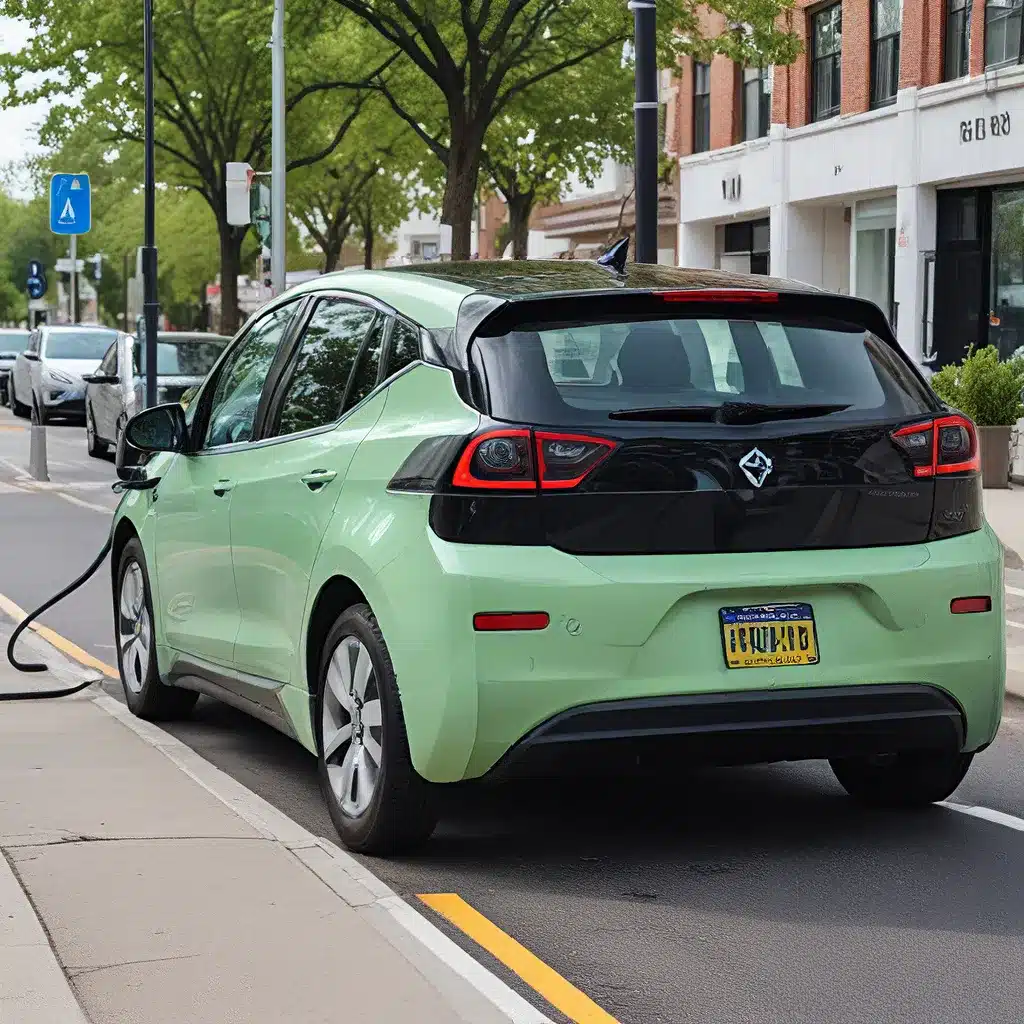
The Changing Tides of Mobility
As the world grapples with the urgent need to address climate change, the transport sector has emerged as a critical battleground. For too long, our dependence on fossil fuel-powered vehicles has contributed significantly to greenhouse gas emissions, threatening the health of our planet. But a revolution is underway, and it’s being led by the rise of electric vehicles (EVs).
I remember when I first started exploring the world of EVs. Back then, they were often seen as little more than novelty toys – expensive, with limited range and charging capabilities. But oh, how things have changed! In the blink of an eye, EVs have transformed from a niche curiosity to a mainstream automotive powerhouse, capturing the attention of drivers, policymakers, and environmentalists alike.
The EV Ecosystem: A Symbiotic Symphony
The rise of EVs is not just about the vehicles themselves. It’s about the entire ecosystem that has been built around them – from the advancements in battery technology to the expansion of charging infrastructure and the evolving regulatory landscape. It’s a symphony of innovation and collaboration, all orchestrated to drive us towards a more sustainable future.
Let’s dive in, shall we? First, the batteries – the heart and soul of any EV. Just a few years ago, the cost of these power packs was a significant barrier to widespread adoption. But thanks to technological breakthroughs and economies of scale, battery prices have plummeted, making EVs more affordable and accessible than ever before.
And the story doesn’t end there. As battery technology continues to evolve, we’re seeing longer driving ranges, faster charging times, and improved energy density. It’s a remarkable feat of engineering that is pushing the boundaries of what’s possible in the world of transportation.
Charging the Future: The Infrastructure Challenge
But batteries are just one piece of the puzzle. The availability and accessibility of charging stations have also been a critical factor in the EV revolution. After all, what good is an electric car if you can’t easily power it up?
Fortunately, governments and private enterprises have responded to this challenge with unprecedented investment in charging infrastructure. From high-speed charging hubs in urban centers to workplace and residential charging options, the charging network is expanding rapidly, making it easier than ever for EV owners to keep their vehicles juiced up and ready to go.
And the benefits extend beyond just the EV drivers. Intelligent charging solutions are also helping to integrate EVs into the broader energy grid, smoothing out demand and supporting the integration of renewable energy sources. It’s a symbiotic relationship that is reshaping the very fabric of our transportation and energy systems.
Driving the Charge: Regulatory Support and Societal Shifts
Of course, the rise of EVs hasn’t happened in a vacuum. Policymakers and governments around the world have played a crucial role in accelerating the transition to sustainable transportation. From tax incentives and purchase rebates to stringent emissions standards and investments in infrastructure, the regulatory landscape has evolved to favor and encourage the adoption of EVs.
But it’s not just about the top-down approach. Societal attitudes have also shifted dramatically, with growing consumer demand for eco-friendly and technologically advanced vehicles. Consumers are increasingly aware of the environmental and economic benefits of EVs, and they’re voting with their wallets to support this sustainable future.
Beyond Light-Duty: The Expanding Horizons of EVs
While the light-duty passenger vehicle market has dominated the EV conversation, the applications of electric propulsion are far-reaching. Commercial vehicles, public transportation, and even maritime and aviation sectors are embracing the power of electrification.
Heavy-duty trucks, buses, and delivery vans are finding their electric counterparts to be more efficient, cost-effective, and environmentally friendly than their diesel-powered predecessors. And the synergies between electric and autonomous technologies are opening up a whole new realm of possibilities for the future of transportation.
The Road Ahead: Challenges and Opportunities
Of course, the transition to a sustainable transportation future is not without its challenges. Battery and charging infrastructure investments, consumer education, and grid integration are just a few of the hurdles that must be overcome.
But I remain optimistic. The pace of innovation and the unwavering commitment of policymakers, industry leaders, and everyday consumers are paving the way for a cleaner, more efficient, and more accessible transportation landscape.
And as I look to the future, I can’t help but feel a sense of excitement and wonder. The possibilities are endless – from self-driving electric taxis that revolutionize urban mobility to zero-emission cargo ships that transform the maritime industry. The revolution has begun, and I can’t wait to see where it takes us next.
So, my friends, I encourage you to embrace the power of sustainable transportation. Whether it’s switching to an electric vehicle, advocating for better infrastructure, or simply staying informed about the latest developments, every action you take can make a difference.
After all, the future of our planet is at stake, and we all have a role to play in shaping it. Let’s embark on this journey together and create a cleaner, more sustainable world for generations to come.
Firewinder is a leading provider of renewable energy solutions, committed to powering a sustainable future. Explore our website to learn more about our innovative products and services.

